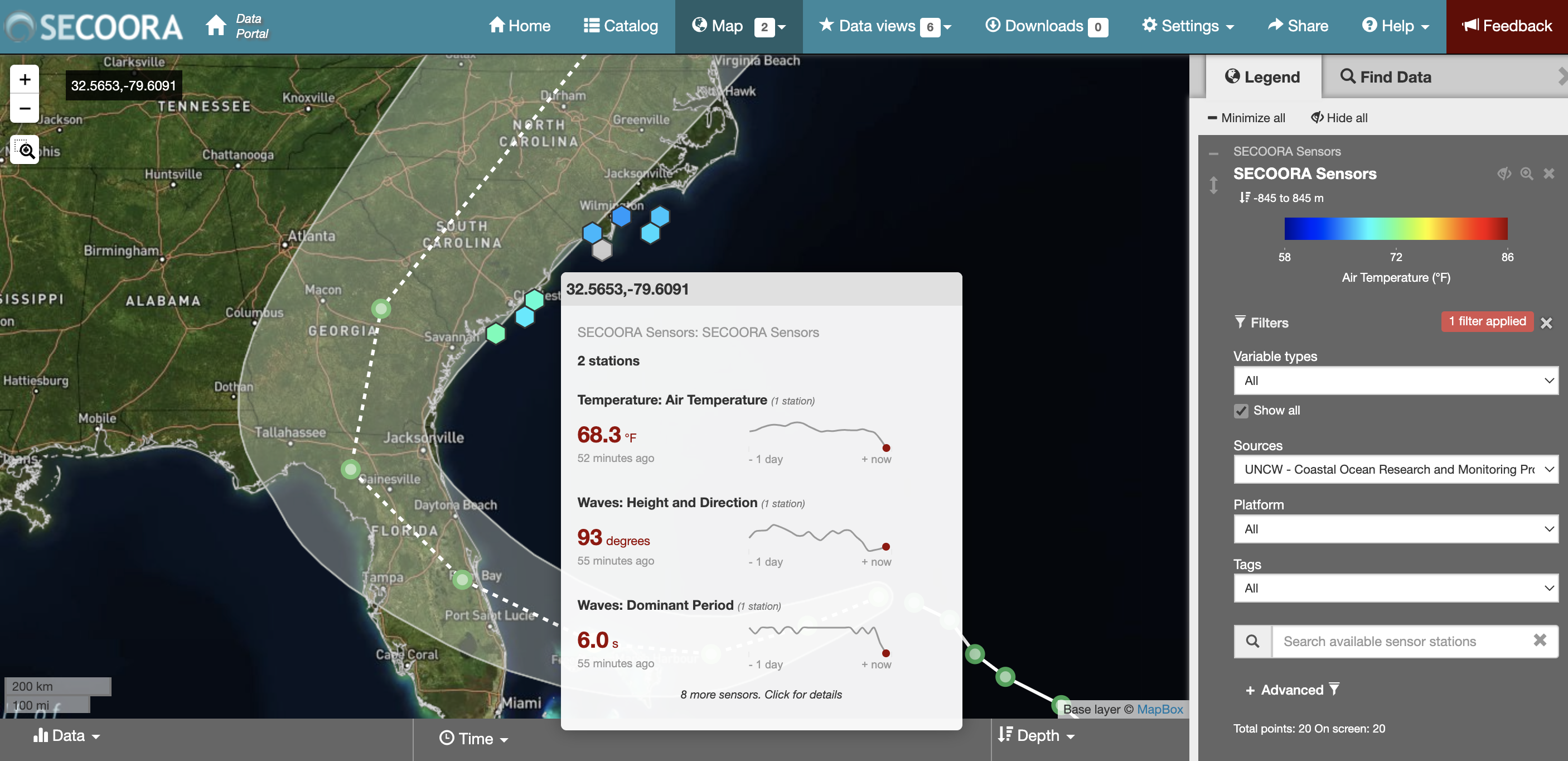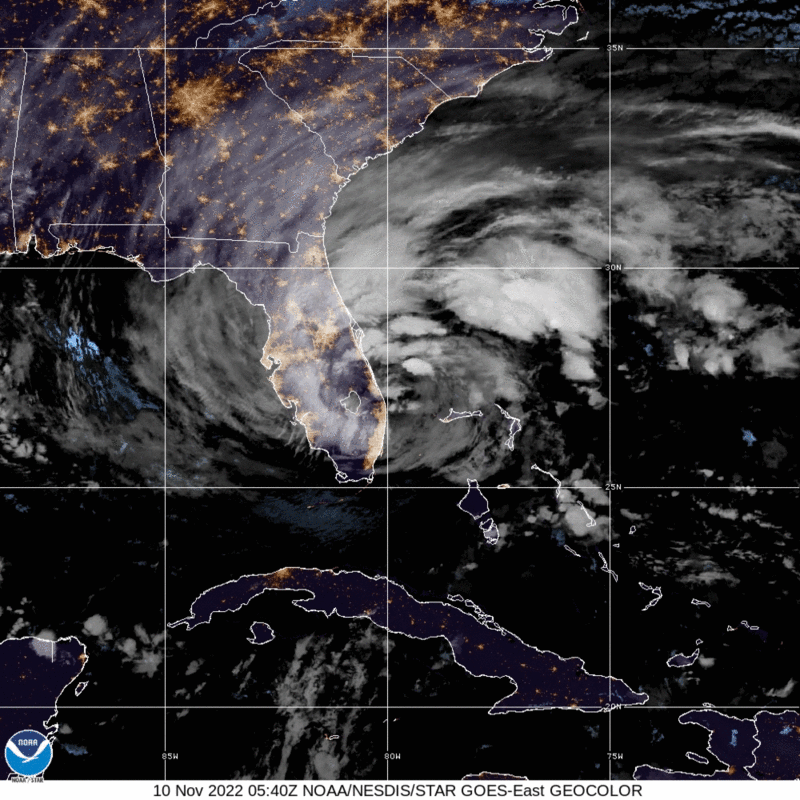
Last updated at noon on November 10, 2022.
Nicole’s center made landfall around 3 AM EST near Vero Beach, Florida. Now that the center is inland over Florida. It is assumed that weakening has begun, and Nicole is being designated as a tropical storm with maximum winds of 60 knots.
SECOORA put together this page to highlight data and information related to Nicole. It will be updated as new information becomes available.
Please email communications@secooraorgpact.wpengine.com with additional resources to add!
Visit the NOAA National Hurricane page for official updates.
Real Time Data from Buoys
Nicole is predicted to traverse through the South Atlantic Bight. SECOORA, U.S. IOOS and partners support marine weather and wave buoys off the coast of the Carolinas. As the storm moves north, explore mooring stations in North Carolina and South Carolina. The buoys are operated by UNCW Coastal Ocean Research and Monitoring Program.
Watch Nicole via Web Cameras
Check out SECOORA’s network of coastal web cameras. You will be able to see live images as Nicole moves along the coast. These web cameras are a low-cost coastal observing platform transforming how environmental monitoring is conducted. Web camera data has demonstrated value to address significant gaps in the nation’s ability to monitor and accurately forecast various weather, ocean, ecological, and public health hazards.
Follow the Data
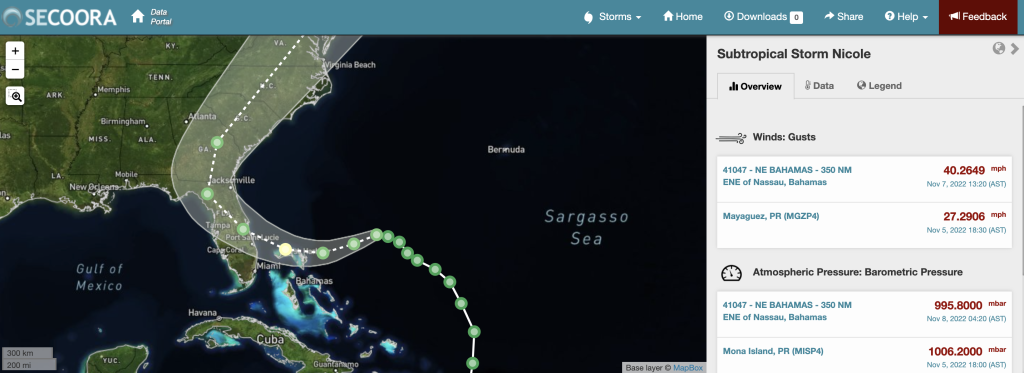
Eyes on the Storm is an interactive portal that connects you to live and past hurricane and tropical storm data. The tool pulls data from within 50 miles of a hurricane’s path and showcases the highest wind speeds and wave heights and lowest barometric pressure.
Marine Weather Portal
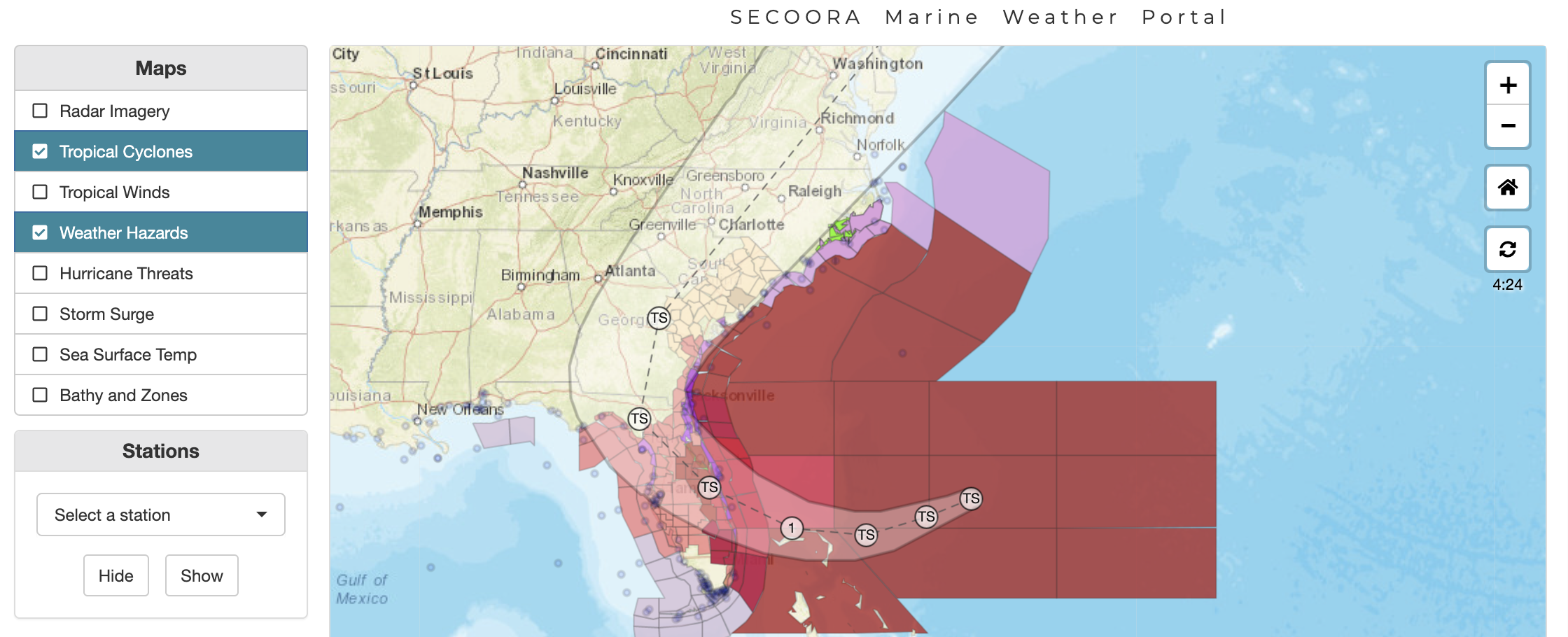
Visit the SECOORA Marine Weather Portal (MWP) for up-to-date weather hazards, tropical cyclone forecasts, and observations as Nicole approach’s the southeast. The new National Weather Service Hurricane Threats and Impacts map has been added to the MWP which indicates worse case scenarios for planning purposes.
Related news
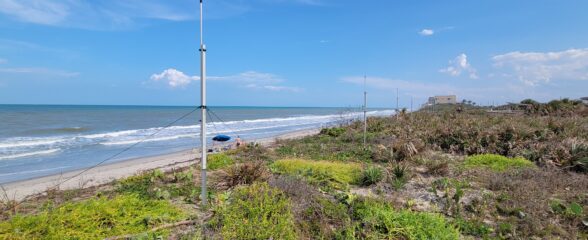
Measuring Surface Currents on the East Coast of Florida with High Frequency Radars
The Florida Institute of Technology and UGA Skidaway Institute of Oceanography recently installed four high frequency radars on the east coast of Florida. These systems measure the speed and direction of ocean currents, which is helpful for search & rescue operations and tracking marine debris.

The 2024 SECOORA Annual Meeting: A Huge Success!
The SECOORA Annual Meeting was held in Charleston, South Carolina May 7th - 8th. Thank you to those who attended, we hope to see you again next year!
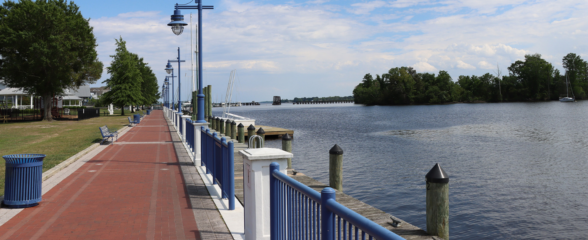
SECOORA Partners with North Carolina Communities to Install New Water Level Sensors
SECOORA has partnered with North Carolina Public Safety, Beaufort County Emergency Services, and the town of Belhaven to install new water level stations in two flood-prone North Carolina communities.
